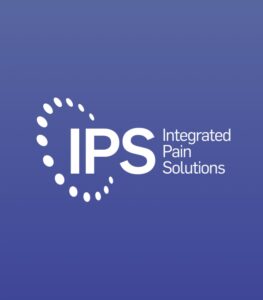When You Should See a Specialist for Chronic Pain
Chronic pain is a condition that affects millions of people and can significantly impact daily life, relationships, and overall well-being. Unlike acute pain, which serves as a warning signal for injury or illness and typically subsides with treatment, chronic pain persists for weeks, months, or even years. Recognizing when to seek help from a specialist is essential for managing this complex condition effectively.
Understanding Chronic Pain
Chronic pain is often defined as pain lasting longer than three months or beyond the expected period of healing. It can result from an identifiable condition, such as arthritis or a previous injury, but it may also develop without a clear cause. Common types of chronic pain include:
- Back pain: Often associated with spinal issues, injuries, or poor posture.
- Neck pain: Frequently caused by muscle strain, herniated discs, or conditions like cervical spondylosis.
- Joint pain: Seen in arthritis or overuse injuries, affecting mobility and daily function.
- Nerve pain: Caused by conditions like sciatica or neuropathy, often characterized by burning or tingling sensations.
While over-the-counter medications, rest, or physical therapy may provide relief, persistent or worsening symptoms require a deeper examination to identify the underlying causes and formulate an effective treatment plan.
Signs It’s Time to See a Specialist
Deciding when to see a pain management specialist can be challenging, especially if you’ve grown accustomed to living with discomfort. However, certain signs suggest that professional intervention is necessary:
- Pain Persists Despite Treatment: If home remedies, physical therapy, or prescribed medications fail to alleviate your pain, it may be time to consult a specialist. Chronic pain often involves multiple factors—physical, neurological, and psychological—that require a multidisciplinary approach.
- Pain Interferes with Daily Life: When pain begins to affect your ability to work, sleep, or participate in activities you enjoy, it signals the need for specialized care. Chronic pain can also lead to secondary issues like depression, anxiety, and social isolation, further impacting quality of life.
- Dependence on Medications: Relying heavily on pain medications to get through the day is a red flag. Specialists can offer alternatives, such as interventional procedures or lifestyle changes, that address the root causes of pain rather than masking symptoms.
- Unclear Diagnosis: If the cause of your pain is uncertain or misdiagnosed, a pain management specialist can perform comprehensive evaluations to pinpoint the source. Advanced diagnostic tools, such as imaging studies and nerve tests, can help identify conditions that might otherwise go unnoticed.

What to Expect from a Pain Specialist
Pain management specialists are trained to evaluate and treat complex pain conditions. At Integrated Pain Solutions (IPS), our team uses a holistic approach to address the multifaceted nature of chronic pain. The initial visit typically involves a detailed medical history review, physical examination, and discussion of symptoms.
Using this information, your specialist will develop a personalized treatment plan. Options may include:
- Interventional therapies, such as nerve blocks, epidural injections, or joint injections, to target specific pain sources.
- Physical therapy to improve strength, mobility, and function.
- Medication management to ensure safe and effective use of pain-relieving drugs.
- Lifestyle counseling on diet, exercise, and stress management to enhance overall well-being.
Why Early Intervention Matters
Seeking help sooner rather than later can prevent chronic pain from worsening and leading to long-term complications. Prolonged pain often affects the nervous system, making it more sensitive to pain signals and harder to treat. Additionally, untreated pain can impact mental health, increasing the risk of depression and anxiety.
Early intervention allows for a broader range of treatment options and increases the likelihood of achieving significant relief. Specialists can also coordinate with other healthcare providers to ensure a comprehensive approach to care.
Partnering with Integrated Pain Solutions
At Integrated Pain Solutions, we understand the profound impact chronic pain can have on your life. With 11 locations across central and southern North Carolina, we are committed to providing compassionate, expert care tailored to each patient’s needs.
Our specialists work closely with you to identify the root causes of your pain and develop a comprehensive treatment plan. By combining advanced techniques, cutting-edge technology, and a patient-centered approach, we aim to help you regain control over your life and rediscover comfort and mobility.
Take the First Step
Chronic pain doesn’t have to dictate your life. If you’re experiencing persistent pain that affects your daily activities or overall well-being, consider consulting a pain management specialist. At IPS, we’re here to support you every step of the way. Contact us today by calling (910) 687-4888 or using our convenient online contact form to schedule an appointment at one of our 11 North Caolina locations including our featured location this month for Pain Management in Laurinburg, NC.
How Age Affects Joint Health and Pain Levels
When we think about joint health and aging, it helps to imagine our joints as complex mechanical systems, like the well-oiled hinges of a door. Just as these hinges can become worn and squeaky over time, our joints undergo natural changes as we age. At Integrated Pain Solutions, we want our North Carolina neighbors to better understand how and why these changes occur, and what they mean for our daily lives.
Understanding Your Joints
Before diving into how aging affects our joints, it's important to understand what makes up a joint. Think of a joint as a sophisticated meeting point between bones, cushioned by cartilage and lubricated by synovial fluid. This fluid acts like oil in a car engine, helping everything move smoothly. Supporting these components are ligaments and tendons, which work like strong rubber bands to hold everything together and enable movement.
The Timeline of Joint Aging
Our joints begin showing signs of age earlier than many people realize. Around age 30, our bodies start producing less synovial fluid, and the cartilage begins to thin gradually. This process is similar to the way a favorite pair of shoes slowly loses its cushioning over time. By our 40s, many people notice the first hints of stiffness, particularly in the morning or after sitting for long periods.
Why Aging Affects Our Joints
The aging process impacts our joints in several ways. First, the body's ability to repair and regenerate tissues slows down, much like an older car that takes longer to bounce back from wear and tear. The cartilage protecting our joints becomes thinner and may develop rough patches, like a smooth road surface can eventually develops potholes with repeated use.
Additionally, our bodies produce less synovial fluid as we age, reducing the natural lubrication in our joints. The ligaments and tendons supporting our joints also become less elastic over time, much like a rubber band that's been stretched repeatedly and loses some of its snap.

The Role of Daily Activities
Our lifestyle choices significantly impact how aging affects our joints. Think of joint health like a bank account – good habits make deposits, while harmful activities make withdrawals. Regular movement helps distribute nutrients to joint tissues, similar to how stirring helps distribute seasoning throughout a soup. However, certain activities can accelerate joint wear, particularly those involving repetitive motions or excessive impact.
Managing Joint Health Over Time
Just as we perform regular maintenance on our cars to keep them running smoothly, we can take steps to maintain our joint health. Regular, low-impact exercise acts like WD-40 for our joints, keeping them mobile and wel-lubricated. Activities like swimming or cycling provide excellent benefits while minimizing stress on the joints.
The weight we carry significantly impacts our joints, particularly in our knees and hips. Each pound of body weight adds about four pounds of pressure to our knee joints during walking – imagine carrying a full gallon of water (about 8 pounds) and how that extra weight would affect each step.
Professional Care and Treatment Options
When joint pain begins affecting daily life, various pain treatment options exist, ranging from conservative to more advanced approaches. Physical therapy works like a tune-up for your joints, helping to improve their function and reduce pain through targeted exercises and hands-on techniques. More advanced treatments, such as corticosteroid injections, act like temporary shock absorbers, providing relief during particularly painful periods.
At Integrated Pain Solutions, we understand that each person's joint health journey is unique. We approach treatment like a customized fitness plan, tailoring our recommendations to each patient's specific needs and lifestyle across our 11 North Carolina locations.
A Balanced Perspective on Joint Pain
While joint changes are an inevitable part of aging – like gray hair or wrinkles – they don't have to severely impact quality of life. Understanding these changes allows for proactive management, much like how understanding weather patterns helps us prepare for different seasons. Through a combination of self-care, lifestyle modifications, and professional support when needed, maintaining healthy, functional joints throughout life is achievable.
For more information about managing age-related joint pain or to schedule a consultation at any of our 11 locations in central and southern North Carolina including our featured location this month for Pain Management in Jacksonville, NC.
Contact Integrated Pain Solutions by calling (910) 687-4888 or using our convenient online contact form. Our team of specialists is dedicated to helping you understand and manage your joint health at every stage of life.
Common Misconceptions About Chronic Pain Treatment
For the millions of Americans living with chronic pain, finding effective treatment can feel like an overwhelming journey. At Integrated Pain Solutions, we often encounter patients who arrive with misconceptions about pain management that may have delayed their path to relief. We’d like to address some of the most common myths about chronic pain treatment and provide accurate information to help you make informed decisions about your care.
MYTH: "Strong Pain Medications Are the Only Effective Solution"
One of the most persistent misconceptions is that powerful prescription medications, particularly opioids, are the only meaningful way to manage chronic pain. While medication can play an important role in a pain management strategy, modern pain treatment encompasses a much broader range of effective options. At IPS, we employ a comprehensive approach that may include physical therapy, behavioral therapy, minimally invasive procedures, and alternative therapies like acupuncture and biofeedback. Many patients achieve significant improvement through a combination of these treatments, often with minimal or no need for strong pain medications.
MYTH: "Pain Management Is Just About Masking Symptoms"
Another common misunderstanding is that pain management merely covers up symptoms without addressing underlying causes. In reality, contemporary pain management takes a diagnostic and therapeutic approach aimed at identifying and treating the root causes of pain whenever possible. Our specialists at IPS conduct thorough evaluations using advanced imaging and diagnostic techniques to understand the specific mechanisms causing your pain, allowing us to develop targeted pain treatment strategies that address both symptoms and sources.
MYTH: "Seeking Pain Treatment Means Admitting Defeat"
Many people view seeking help for chronic pain as a sign of weakness or failure. This couldn't be further from the truth. Chronic pain is a complex medical condition that, like any other health issue, requires professional evaluation and treatment. Taking action to address your pain is a sign of self-awareness and strength. Early intervention often leads to better outcomes and can prevent the development of secondary complications.

MYTH: "Exercise Will Make Chronic Pain Worse"
While it may seem counterintuitive, appropriate physical activity is often crucial for managing chronic pain. The key word here is "appropriate" – movement should be guided by medical professionals who understand your specific condition. Properly prescribed exercise can strengthen supporting muscles, improve flexibility, enhance circulation, and release natural pain-relieving endorphins. Our specialists at IPS work closely with physical therapists to develop safe, effective exercise programs tailored to each patient's capabilities and goals.
MYTH: "Pain Management Clinics Are Only for Terminal or Severe Cases"
We often hear from patients who delayed seeking treatment because they believed their pain wasn't "serious enough" to warrant specialized care. Pain management is appropriate for anyone whose pain impacts their quality of life, regardless of the severity. Early intervention can prevent pain conditions from worsening and help maintain function and mobility. Our eleven locations throughout central and southern North Carolina provide accessible care for patients experiencing various types of pain at all levels of severity.
FACT: We’re Here to Help
At Integrated Pain Solutions, we understand that each patient's experience with chronic pain is unique. Our team of specialists is committed to providing individualized care that addresses your specific needs and concerns. By dispelling these common misconceptions about pain treatment, we hope to encourage more people to seek the care they need to improve their quality of life. If you're struggling with chronic pain, remember that effective treatment options are available, and our experienced team is here to help guide you toward the relief you deserve.
Contact Integrated Pain Solutions by calling (910) 687-4888 or using our convenient online contact form to schedule an appointment at one of our 11 pain clinics in North Carolina.
Can Tendons Heal Themselves?
Tendons are tough, flexible bands of tissue that connect muscles to bones, and play a crucial role in our body's ability to move. When these important structures are injured, a common question arises: can tendons heal themselves? At Integrated Pain Solutions (IPS), we often encounter patients seeking answers about tendon healing and recovery. Let’s look into the natural healing capabilities of tendons and discuss factors that influence their recovery process.
Understanding Tendon Structure and Function
Before delving into the healing process, it's essential to understand what tendons are and how they function. Tendons are composed primarily of collagen fibers arranged in parallel bundles. This structure gives them their characteristic strength and slight elasticity, allowing them to transmit forces from muscles to bones efficiently. Tendons are found throughout the body, with some of the most well-known being the Achilles tendon in the ankle and the patellar tendon in the knee.
The Natural Healing Process of Tendons
The good news is that tendons do have the ability to heal themselves, but the process is often slow and complex. When a tendon is injured, the body initiates a natural healing response that typically occurs in three main phases. The first phase is inflammation, which occurs immediately after an injury. The affected area becomes inflamed, and blood flow increases, bringing healing cells to the site. This phase usually lasts a few days. The second phase is proliferation, which can last several weeks. During this time, the body begins to produce new collagen fibers to repair the damaged tissue. The final phase is remodeling, which can last for months or even years. During this time, the newly formed collagen fibers reorganize and align themselves to restore the tendon's strength and function.
While tendons can heal on their own, the process is not always straightforward or complete without proper care and intervention.
Factors Affecting Tendon Healing
Several factors influence how well and how quickly tendons heal. The severity of the injury plays a significant role, with minor strains potentially healing relatively quickly, while complete tears or ruptures often require more time and sometimes surgical intervention. The location of the tendon also matters, as some tendons, like those in the shoulder, have a poorer blood supply, which can slow healing.
Age and overall health are also important factors, with younger, healthier individuals generally healing faster than older adults or those with chronic health conditions. Nutrition can play a crucial role, as a balanced diet rich in protein, vitamins (especially vitamin C), and minerals supports tendon healing. Finally, activity level is a key consideration. While complete rest is rarely recommended, the right balance of rest and controlled movement is crucial for optimal healing.
Challenges in Tendon Healing
Despite their ability to heal, tendons face several challenges in the recovery process. One significant issue is that healed tendon tissue often lacks the same strength and elasticity as the original tissue. This can lead to a higher risk of re-injury or chronic problems. Another challenge is the formation of scar tissue. While scar tissue helps to repair the tendon, it can also limit flexibility and function if not properly managed during the healing process. Additionally, tendons have a relatively poor blood supply compared to other tissues, which can slow down the healing process. This is particularly true for tendons in areas like the ankles and wrists.
Supporting Tendon Healing
At Integrated Pain Solutions, we emphasize the importance of proper care to support the natural healing process of tendons. While tendons can heal themselves to some extent, medical intervention and rehabilitation often play a crucial role in ensuring optimal recovery.
Some strategies we recommend to support tendon healing include appropriate rest and activity modification to avoid further damage while promoting healing, physical therapy exercises to improve flexibility and strength, and proper nutrition to provide the building blocks for tissue repair. In some cases, minimally invasive procedures or regenerative medicine techniques may be used to stimulate and support the healing process. It's important to note that every injury is unique, and treatment plans should be tailored to individual needs and circumstances.
When to Seek Professional Help
While minor tendon injuries may heal with home care, it's crucial to seek professional medical advice in certain situations. These include cases of chronic pain conditions or swelling, inability to move the affected joint, symptoms that don't improve with rest and home treatment, and recurring tendon problems. Early intervention can significantly improve outcomes and prevent long-term complications.
While tendons often have the ability to heal themselves, the process is complex and often requires support to achieve optimal results. At IPS, we're committed to helping our patients understand their injuries and providing comprehensive care to support the body's natural healing processes. By combining the latest medical knowledge with personalized treatment plans, we aim to help our patients recover from tendon injuries and return to their active lifestyles as quickly and safely as possible.
Remember, if you're experiencing persistent tendon pain or have concerns about an injury, don't hesitate to reach out to our team of specialists. We're here to guide you through the healing process and help you achieve the best possible outcomes for your health and managing pain. Schedule an appointment at any of our 11 locations in North Carolina. Call us at 910-687-4888 or request an appointment online.






 Nadine Shivers, FNP-C
Nadine Shivers, FNP-C Nicole Mealy, PA-BC
Nicole Mealy, PA-BC Jamie Delivuk, MSN, FNP-C
Jamie Delivuk, MSN, FNP-C
 Kimberly Box, ACNP
Kimberly Box, ACNP Thomas Bresley, MD
Thomas Bresley, MD Jackie Chavis, FNP
Jackie Chavis, FNP Marva Rich, PA-C
Marva Rich, PA-C John Rice, PA-C
John Rice, PA-C Laneshia Patrick, MSN, AGNP-C, PMHNP-BC
Laneshia Patrick, MSN, AGNP-C, PMHNP-BC Jennifer Miramontes, FNP-BC
Jennifer Miramontes, FNP-BC John Lane, MPAS, PA-C
John Lane, MPAS, PA-C Shalandria Knight, AGNP-C
Shalandria Knight, AGNP-C Patricia Grant, NP-C
Patricia Grant, NP-C Cecelia Glaubitz, MSN, FNP-C
Cecelia Glaubitz, MSN, FNP-C Sharon Delois Coggin, PA-C
Sharon Delois Coggin, PA-C Karen Warwick, FNP-BC
Karen Warwick, FNP-BC